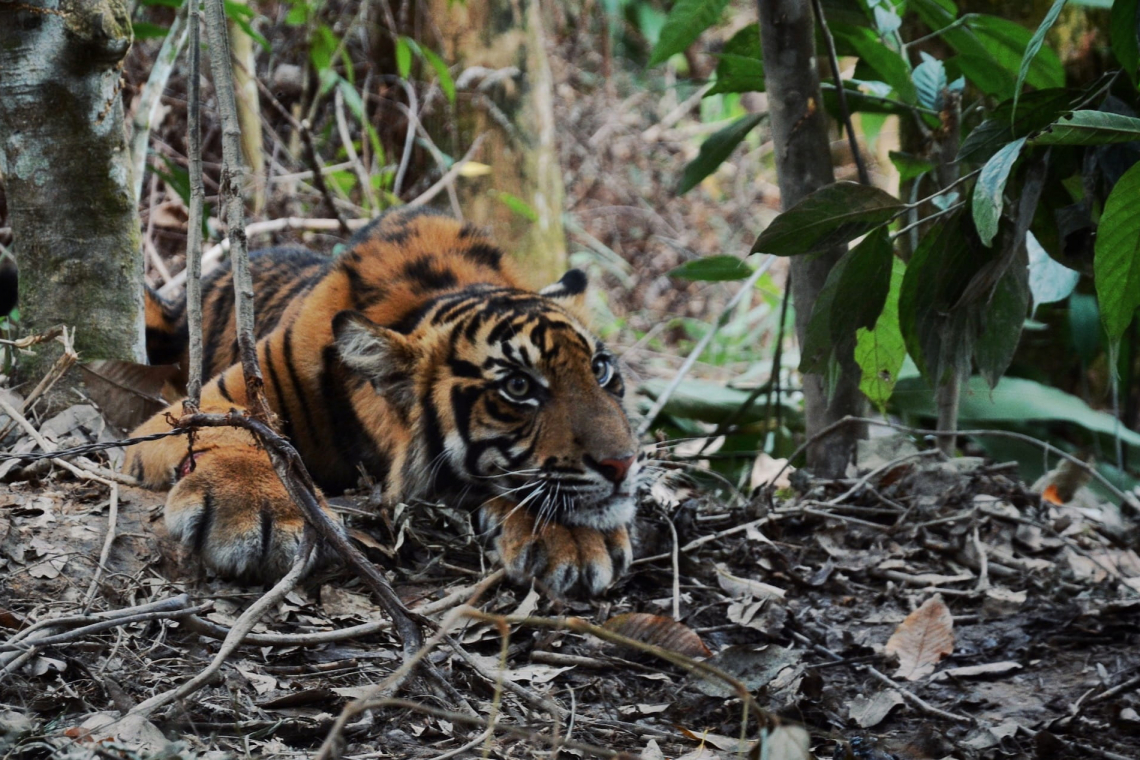The Sumatran tiger (Panthera tigris sumatrae) is clinging to survival, with less than 300 remaining in the wild. Their Indonesian cousins, the Javan and Balinese tigers, have already been declared Extinct, and experts are concerned the Sumatran tiger will follow in their footprints.
Sumatran tiger conservation status
Sumatran tigers face multiple threats to survival, including widespread destruction of their habitats, which reduces their home range and their food sources. A shockingly common cause of death is the deliberate trapping and killing of Sumatran tigers for the illegal trafficking of their body parts. Their skins, bones and other body parts are still being traded for traditional medicines and trophies, despite the hunting and poaching of tigers having been declared illegal decades ago.
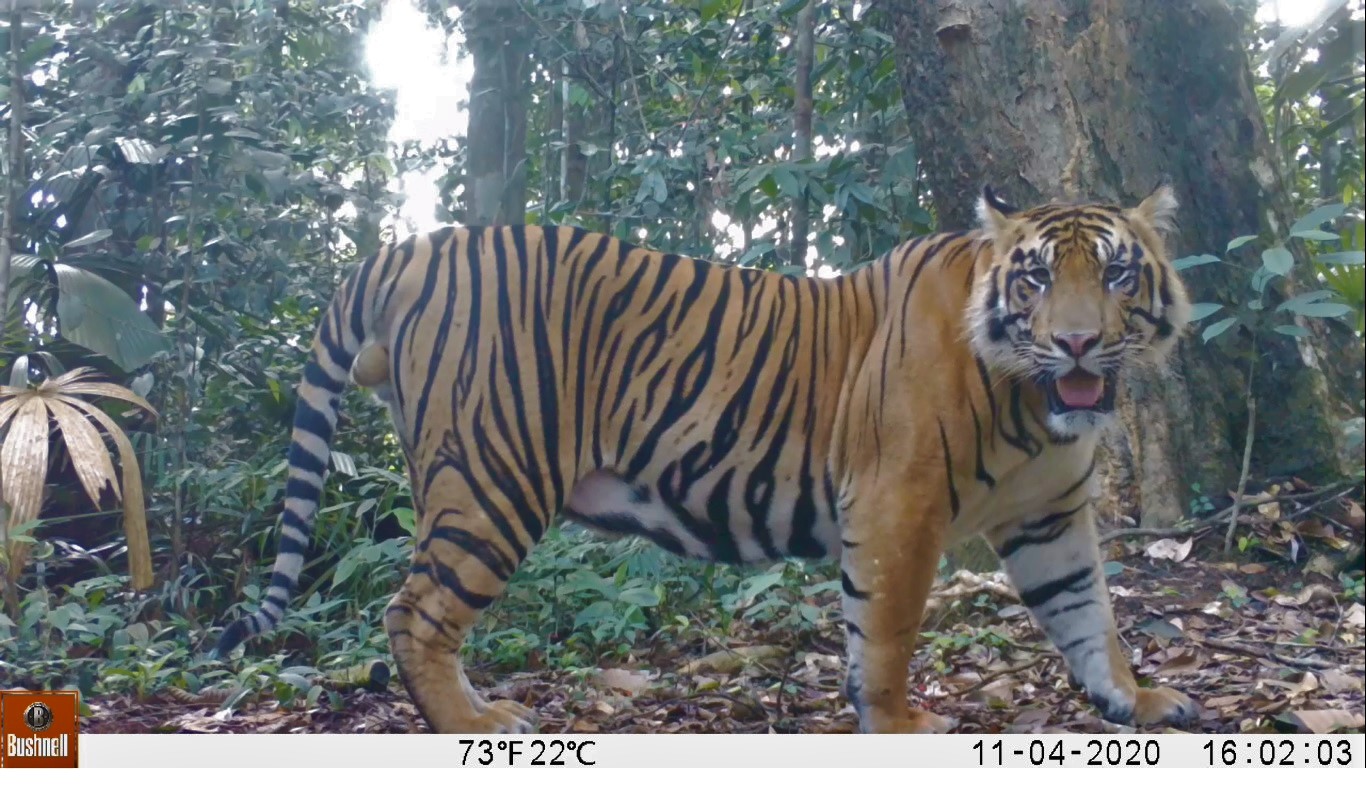
Sumatran Tiger caught on Camera Trap
The International Tiger Project is working with communities and authorities across Sumatra to address these and other threats. In June, the team was involved in a major trafficking bust, where they and local authorities confiscated the skins, teeth, claws and bones of a number of tigers, as well as the stuffed bodies of more than 30 other animals. Although the poacher was arrested, this is only one small step in combating the illegal trade in Critically Endangered species, which is one of the largest illegal industries in the world.
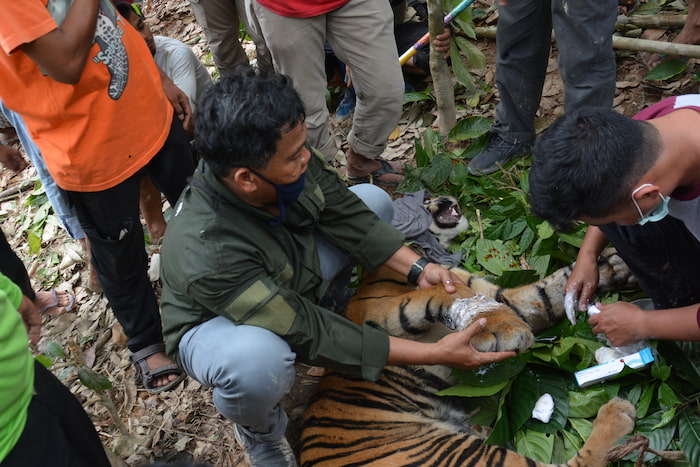
Putra Danau (tiger) receiving medical treatment
Sumatran tiger's conflict with local residents
Another key threat to Sumatran tigers is conflict with local communities and villagers, especially when farmers retaliate in response to tiger attacks on livestock by laying poison and snares in the forest. The International Tiger Project (ITP) and their partners are implementing a simple, low-cost and effective solution to this challenge. They’re installing tiger-proof enclosures in forest edge communities near the Leuser Ecosystem in North Sumatra, which is home to one of the largest populations of Sumatran tigers.
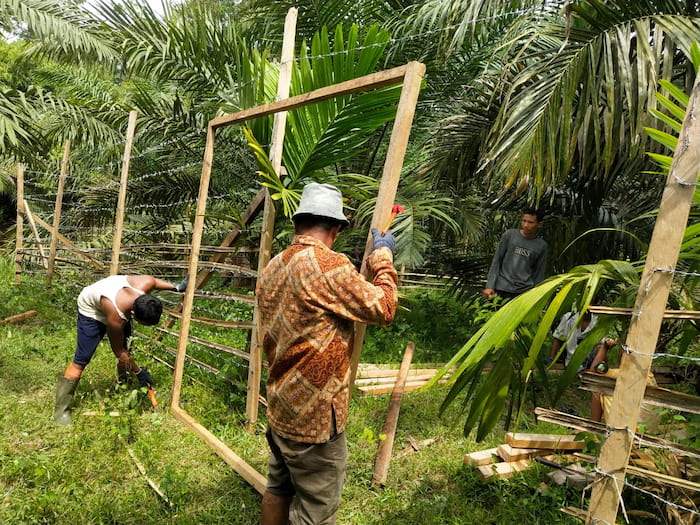
ITP Tiger Team work with local community to build tiger proof cattle corrals to protect livelihoods
The enclosures are made of bamboo, wire and wood and can be erected in a couple of days, providing overnight safety and protection for cattle and other livestock. Not only is this solution reducing poisonings and other retaliation against Sumatran tigers, but it’s also a key engagement tool for ITP and their partners to build relationships with communities and farmers. With outcomes that benefit people, livestock, and tigers, these cattle corrals are a win-win-win solution.
Documentary: The Sumatran Tiger - The Last of Their Kind
Tiger-proof enclosures have been so popular that many farmers living near the Leuser Ecosystem are asking for their own cattle corrals. Importantly, communities themselves work hand-in-hand with the local NGOs to build the enclosures. This positive goodwill and relationship building is a key part of reducing human-tiger conflict with the forest edge communities.
The threats to this Critically Endangered species are numerous, but there are solutions. ITP is working on the frontline with their partners every day to protect these majestic big cats from threats.
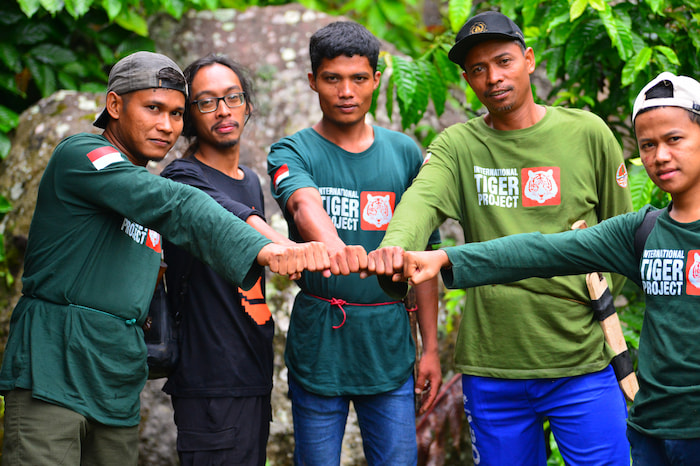
Rangers of the ITP West Sumatran Tiger Team
Tiger Friendly Nagari
Although Sumatran tigers are facing the fight of their lives, there are multiple solutions and actions taking place across the island to secure their future. The extinction of Sumatran tigers would be a tragedy for the species, but also for the forests. Without this apex predator, forest health would decline. Like other keystone species, such as orangutans, elephants and sun bears, tigers play a pivotal role in maintaining ecosystem stability and biodiversity.
The International Tiger Project is helping achieve real outcomes on the frontline, by removing snares, patrolling forests, monitoring species through camera traps, engaging with communities, and investigating wildlife criminals. They work across all major tiger ecosystems in Sumatra, from the Leuser Ecosystem in North Sumatra to the Way Kambas National Park in the southeastern part of the island. They are fully reliant on donations and funding from supporters for their operations. Visit their website to find out more: www.internationaltigerproject.org/
